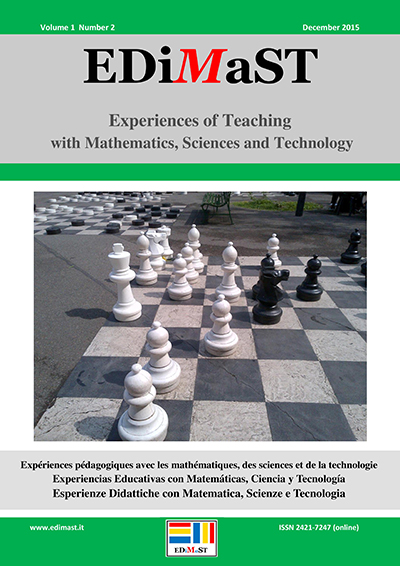Changing Triangle
Keywords:
isoperimetry, equivalence, symmetry, maximum, minimumAbstract
The activity begins with the construction of a paper dynamic model where, from the movement of the point which is along the side of a rectangle, at regular intervals we can obtain a series of triangles. We can then make a classification of those triangles and observe two crucial conceptual cruxes: the variation of their area and perimeter. In fact, the area and the perimeter are two concepts that are often dealt with separately and in different moments and usually is the drawing that characterizes the study of geometrical figures. The staticity of the drawing nevertheless makes it easy to create misconceptions because it has the limit to make the student observe a single aspect and doesn't help him or her to recognize analogies and differences. These misconceptions can become obstacles to learning. This alternative route allows the construction of concepts through the use of a dynamic model that places the student at the center of his/her own learning through a direct exploration that consists of the perception of the elastic wire and in seeing the transformation of the figure. The activity can be proposed in the last year of elementary school and then reused to analyze and or deal with various aspects such as: classification of triangles, variations of areas and perimeters, functions and determinations of maximums and minimums. This allows the study of interesting geometric aspects and for this reason it can be used well in a situation in which a vertical curriculum is applied.References
A. Maria Damiani, A. Maria Facenda, Paola Fulgenzi, Giuseppina Gattoni, Franca Masi, Janna Nardi, Floriana Paternoster -Sezione Mathesis – Pesaro Marzo 2000 Geometria Con i Cartoni Animati (pp. 2-5)
Downloads
Published
2016-01-16
How to Cite
Fazzino, A. L. (2016). Changing Triangle. EDiMaST: Experiences of Teaching With Mathematics, Sciences and Technology, 1(2). Retrieved from https://www.edimast.it/index.php/edimast/article/view/17
Issue
Section
Experiences & Research Articles





